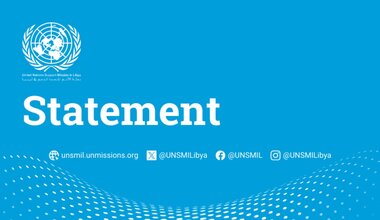IOM Libya Releases 2016 Displacement Trends Analysis
Libya - IOM Libya last week (17/03) published DTM Libya’s Internal Displacement in Libya – 2016 in Review which presents a comprehensive overview of Libya’s human mobility patterns, trends and dynamics for 2016. The report also provides an analysis of Libya’s internally displaced persons (IDP) displacement drivers, shelter settings, primary needs and demographics categorized by period of displacement.
The report contains data collected from across seven rounds of Displacement Tracking Matrix (DTM) data collection. By December 2016, DTM had recorded 303,608 IDPs and 453,540 returnees identified across the whole of Libya.
2016 was an important turning point in the dynamics of displacement and returns in the country. In the first half of the year, many IDPs were residing mainly in the regions of Banghazi, Al Wahat, Tripoli and Misratah. Most of the identified IDPs had been displaced following the eruption of conflict in 2014. The number of IDPs identified increased between May and August 2016 due to the fighting in Sirte. With the de-escalation of conflict in various parts of the country in the latter part of the year, the number of identified IDPs decreased while the number of returnees rose.
While most IDPs were recorded as residing in private accommodation, their reduced access to livelihood opportunities has left them particularly vulnerable to the increase in prices and rent as well as the current cash shortages. IDPs were also acutely affected by the limited availability of medical services, basic food and non-food items (NFIs); this has been confirmed by the latest round of data.
Most IDPs who returned to their homes in 2015 and 2016 went back to the regions of Al Jifarah, Banghazi, Al Jabal al Gharbi and Tripoli. The shelter setting for most returnees was their former home.
“This report provides an opportunity to better understand the context underpinning displacement in Libya,” noted DTM Programme Manager Daniel Salmon. “Shifts in the data are better understood when we examine and contextualize the factors that influenced the movement of IDPs and returnees in the country.”
DTM has been an authoritative source of information on internal displacement in Libya since its establishment in the country in late 2015. DTM data has been used by UN partners to identify and analyze the needs of the most vulnerable groups in Libya and to advocate for more targeted humanitarian assistance to them.
DTM has updated its methodology for 2017 to have a stronger focus on the primary needs of returnees and to gather more sectorial data for each area in response to shifts in displacement trends. DTM will also gather more multi-sectorial data on conditions in each baladiya (municipality) and on community relations between the population groups residing therein.
This report is the latest from the Libya DTM’s Mobility Tracking Module. Mobility Tracking facilitates the regular collection and dissemination of data on the numbers and locations of IDP populations as well as migration flows to, through and from Libya. It also captures Libya’s baseline demographic data on the number, age, sex, gender, origin and intention of the county’s IDP, returnee and migrant populations.
DTM informs the humanitarian response in Libya by identifying priority needs and regularly providing updates as the situation develops to facilitate the delivery of timely targeted humanitarian assistance and provide an evidence base for wider policy responses.
For the full report and all other DTM publications, please see www.globaldtm.info/libya
For further information, please contact IOM Libya. Othman Belbeisi, Tel: +216 29 600389, Email: obelbeisi@iom.int or Daniel Salmon, DTM Programme Manager, at dsalmon@iom.int
 United Nations Peacekeeping
United Nations Peacekeeping UN
UN









